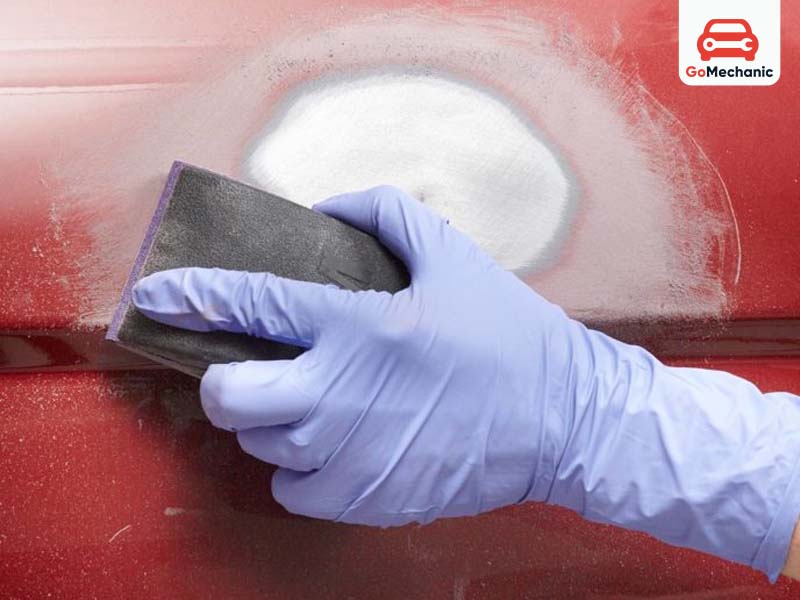
Even small scratches on a vehicle can be quite annoying, particularly when one enjoys the clear look of their car. It could be a result of a shopping cart that got loose, a stone that flew, or even a careless knock on a door. It is, therefore, useful to learn how to fix scratches on a car.
Thankfully, the treatment of the majority of Minor scratches is very simple and does not even require one to spend a lot of money at automotive paint shops. The right equipment, some effort, and a bit of time are all it takes to restore the finish of a vehicle.
1. The Classification of Car Scratches
Before getting into methods of scratch repair, one must first ascertain the nature of the scratch to be repaired. Car scratches can be classified under three broad categories:
- Clear coat scratches: These are the most common as they only affect the uppermost clear layer of paint. These are quite often repaired by easy do-it-yourself techniques.
- Paint scratches: These ones are deeper and affect the colour layer that lies beneath the clear coat.
- Primer scratches: The worst kind such as these ones go deeper than the paint and bonding agent and expose raw primer or metal that needs careful restoration.
2. Tools and Materials Needed

Prior to engaging in a scratch repair, it is important that you have the following tools and materials ready.
- Car Scratch Remover Spray: This is one of the most convenient and effective products for small scratches. It serves to smooth out light surface scratches and bring back some lustre to the scratches on your car’s paint.
- Car Glass Scratch Remover: When the scratches go beyond the body of the car into the windows or windshield, you will have to use a remover for glass surfaces.
- Microfibers: When cleaning and polishing scratch or abrasive surfaces, microfibers are recommended as they will not leave any scratches behind.
- Polishing compound: When there are deeper scratches on the car surface the area is polished using a polishing compound to remove unsightly blemishes. it is more effective than sanding alone in many cases.
- Sanding paper: Deep scratches can be levelled with dry fine sandpaper (2000-3000 Number) before the polish application.
3. What is the procedure to fix scratches on a car? Here’s how it is done stepwise.

Step 1: Clean the Affected Area
Mix hot soapy water solution and start scrubbing the area dirty. It is necessary to do this step as well to clean up the area because if there are particles inside the scratch, they can aggravate it to a certain extent. Go ahead and dry the area with a microfiber cloth to avoid additional scratches.
Step 2: Spray Car Scratch Remover
If the scratch is superficial and merely scratches the top clear coat, a car scratch remover spray tends to be enough. These sprays aim to resurface the user’s paint’s glossy coat from scratches by filling in small dents. This is how you do it:
- To begin with, shake the spray can.
- Next, aim the spray at the scratch zone.
- Apply a clean microfiber cloth over the area and polish it rub in circles.
- Repeat polishing until the scratch is no longer visible.
- The spray not only conceals the scratch but also decorates it by matching its tone with the adjacent colours. The number of times this may be done will depend on how deep the scratch is.
Step 3: Car Window Scratch Remover
If the scratch reaches the glass of your automobile, for example, a windshield or side windows you will require a car glass scratch remover. Glass scratches can be problematic, but a small one can still be treated with a glass scratch fixing product. Carry out the following actions:
- Wipe the smooth surface of the glass clean.
- Put some glass scratch remover on the scratched portion of the surface.
- Rub the area with a microfiber towel in a motion that is circular and particular to that area.
- Remove any remaining excess and check the area carefully.
Step 4: Refining the Surface
Once the scratch remover spray is applied, the paint around the scratch will look flat. This is the point at which the polishing compound needs to be included. It helps in restoring the gloss of the paint and helps in blending the repair job.
Step 5: Wax Application for Protection
After the area has been polished, waxing the repaired area will serve as a good protective measure for that repaired surface. Wax encases the surface of the paint while also providing additional gloss.
4. When to Seek Professional Help

Deep scratches to the extent of reaching the primer coat or body metal or large areas damaged usually call for repainting or more repair work. When there is no improvement with the scratching remedy or a certain difficult problem such as a broken glass windshield, it is advisable to go to an auto body shop.
Protecting Your Car From Scratches
Learning how to fix scratches on your vehicle will help you in many ways. With some basic equipment like a car scratch remover spray and a car glass scratch remover, small scratches can be dealt with effectively. Also, don’t forget that prevention is key and regular cleaning and maintenance will help prevent scratches so it is best to always give some time for protective measures for your vehicle.

